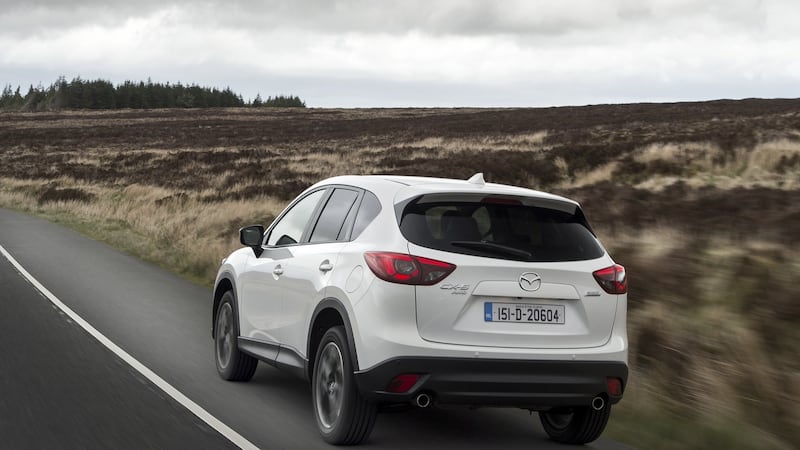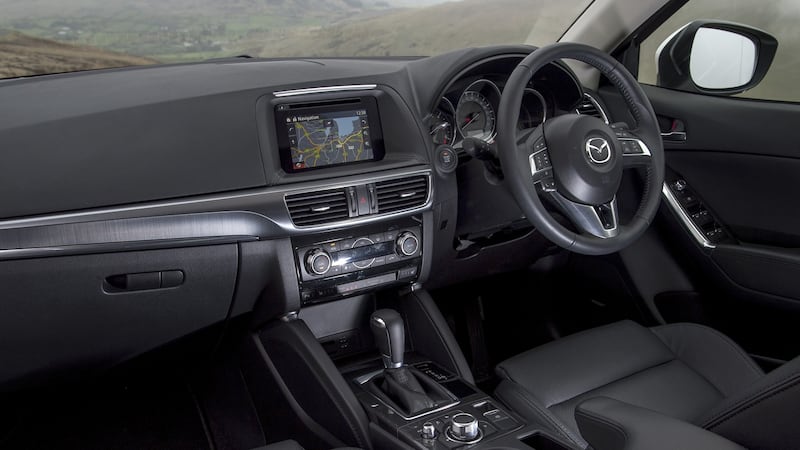When Mazda first introduced the CX-5 crossover in 2012, it was the sort of gamble that has the croupiers of Monaco taking sharp intakes of breath, before checking with the manager whether Mr Mazda can indeed take the deeds to his company and bet them on red.
Mazda was then not long divorced from Ford and in need of a new set of platforms and engines. It knew that carbon emissions were critical, but instead of following the conventional route of a down-sized turbo engine to keep those emissions quelled, Mazda followed a different route – it went big and unstressed, using a 2.2-litre with a low (for a diesel) compression ratio and then taking the finest of combs to the weight of every component of the chassis, body and interior in an effort to find efficiency through lightness – a programme it called SkyActiv.
It worked. Mazda’s gamble would have easily broken the bank at Monte Carlo (had, in 2012, there been any unbroken banks around) and the CX-5, SkyActiv and the 2.2-litre diesel have gone on to be worldwide hits.


So just as with the Range Rover Evoque we recently tested, Mazda has decided on a steady approach to updating the CX-5. Visual differences are minimal (yet surprisingly effective) and effort has been concentrated on the areas that, generally, needed it most.
That was particularly true of the interior, which was always nicely made but a little lacking in touchy-feely quality when it came to comparisons with similarly sized models from the big German brands. That has been, partially, addressed.
The CX-5’s cabin remains a little on the plain side, but it’s classy, very comfy and now feels like its made from nicer materials. The biggest upgrade is the new central screen, 7-inches across, and shared with the 3, 6, CX-3 and MX-5.
It’s controlled partially by the touchscreen, partially by a BMW-style rotary controller mounted down behind the gearshift and it’s pretty slick to use. Certainly it passes my own industry standard test – seeing how long it takes to connect my phone and get some music or an audiobook playing.
Reads incoming tweets
In both regards, the Mazda’s new infotainment system is impressively quick and slick, plus it can even read out your incoming text messages and tweets, and can even reply with pre-set shorthand responses, all without taking your eyes off the road. To drive, the CX-5 remains much as it was, which is to say highly impressive. Actually, it’s one of the better crossovers to drive, with lovely steering (lots of weight, plenty of feedback) and impressive poise. Our test model was a range-topping Platinum version with the higher-power 175hp engine, an automatic gearbox and four-wheel drive.
Frankly though, it’s best avoided. Yes, the engine is more refined than before, as is the whole car – thanks in no small part to a thorough redesign of the car’s sound deadening panels and materials. It’s also very brisk, with the official 9.4 seconds time for 0-100km/h giving almost no idea of the lovely, thick seam of surge that comes when you mash the throttle pedal.
It’s quick and while Mazda’s home-grown six-speed automatic gearbox may be a ratio or two short of currency, it shifts with quiet slickness and smoothness.
So why not buy it? Because you don’t need the extra power – the standard 150hp version of the 2.2-litre SkyActiv engine is the superior choice. Not only is it much more economical in the real world (in spite of Mazda’s lofty claims you’ll struggle to get the 175hp engine above 40mpg in daily driving) and it’s actually quicker.
Delete the four-wheel drive option and you’ll trim 0.2 seconds off the 0-100km/h time, and more importantly will stand an evens chance of getting past the 50mpg barrier. Not to mention lopping €190 a year off your motor tax bill if you can live without the automatic gearbox.
The CX-5 also finds itself in a slightly awkward size category. It's slightly larger than, say, a Nissan Qashqai, but significantly smaller (especially inside) than a Honda CR-V or, our current SUV favourite, a Kia Sorento. But it's quite pricey. Forget the fact that our range-topper costs more than €40, 000, a mid-range 150hp manual version costs €32,000, and that's undercut by the likes of a Hyundai ix35, which has similar cabin space. A well-specced Nissan X-Trial costs similar money but can be had with seven seats.
Gamble paid off
With the CX-3 and CX-5, you’d think Mazda would have the crossover world pretty well covered, but the CX-5’s neither-here-nor-there size means it doesn’t.
It can’t compete on space with the Honda, Kia or the Hyundai Santa Fe, but it can’t compete on price with rivals that can match it for space. Mazda really needs a larger (possibly seven-seat) CX-7 model to allow the CX-5 to nudge down a price band.
Mazda’s gamble paid off handsomely in 2012, but now it needs to double down if it’s going to cement its place as an SUV expert. The CX-5’s handling and quality shows Mazda’s strong hand, but rivals have more cards upon which to call.












